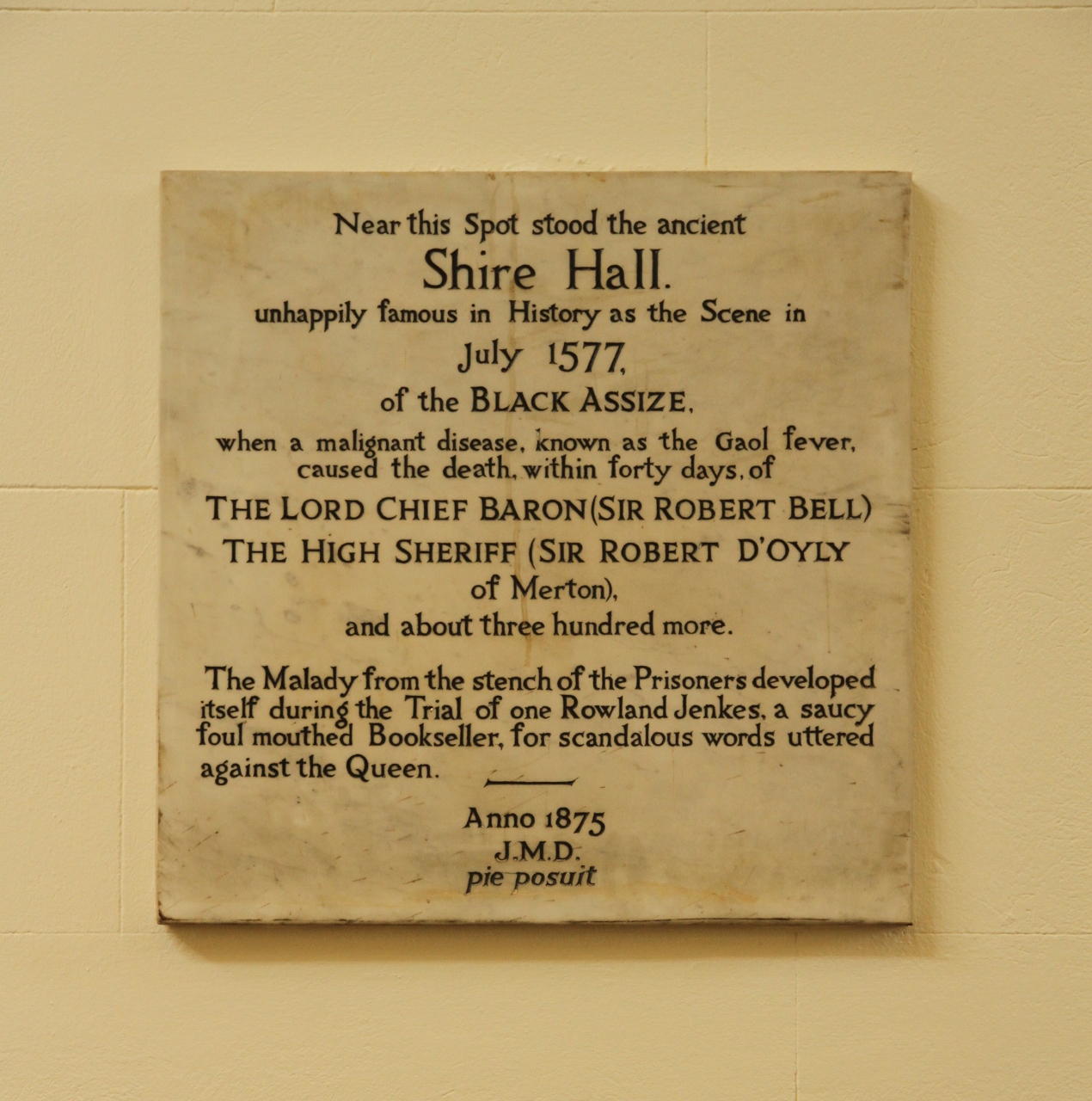The third book of the Luella Winthrop Trilogy is called The Onyx Door. In that book, I included several elements that made me, as an author, nervous. One of them was a 19th-century criminal trial proceeding.
As an attorney, I found my research on 19th-century English criminal procedure, but I was terrified I had included too much nitty-gritty for a lay reader to enjoy. Fortunately, it appears I balanced it well enough, but it’s because I resisted the temptation to include too much of the research. Things like the Black Assize of Oxford.
I read about the Black Assize as I was parsing through the different processes regarding arraignments, grand jury trials, assize trials, and assize schedule rotations. If you don’t know, an assize court was a date set aside for judges from London to administer justice for greater crimes throughout different regions in England.
If you were accused of murder, for example, you would likely find yourself facing trial at an assize court on that jurisdiction’s scheduled time.
As a result, judges went through batch sentencing. A judge might hear a boatload of cases and sentence all of them in a day or two. If a judge managed to get through an entire assize without administering the death sentence, they called it a white-glove session, and, rumor has it (excuse me, rumour has it), they were presented with a pair of white gloves.
A white-glove session was the opposite of the Black Assize in Oxford at 1577.

If you read the plaque above, you’ll see a reference to something known as gaol fever. You know, that good ole’ gaol fever that randomly kills a few hundred people in a little over a month but not after…
Here’s what was rumoured to happen:
A certain Rowland Jenkes, referred to as a saucy, foul-mouthed bookseller (something I’ve been accused of myself), was arrested for mouthing off scandalous words against Queen Elizabeth. This, at the time, was considered treasonous. He was also a Roman Catholic, which didn’t help his cause at all.
In fact, around the time of Rowland Jenkes’ trial and the following decade, England would pass several laws abridging the rights of Roman Catholics, culminating in the Popish Recusant Act, which forbade Roman Catholics from moving more than five miles from their house without forfeiting all of their property.
In any event, prior to his assize at Oxford Castle, Rowland went to an apothecary with a request to have a curious and foul poison made up to “kill the rats” that had been nibbling on his books. He was a bookseller, remember. The apothecarist struggled to find some of the unusual ingredients requested.
Those who attribute nefarious causes to this dark event in history believe Rowland made a wick lined with his secret substance, included it into a candle, and had snuck the candle into his assize trial.
The speculated result was that 300 people died from this candle’s effects, including the judge, jury, witnesses involved in the trial that would confirm his conviction for treason.
Was it witchcraft, gaol fever, or a sinister magician’s trick?
A 21st-century look back would suggest a small epidemic of gaol fever. But those in attendance said there were no palpable symptoms usually associated with that type of infection, such as noticeable smells or odours. More curious still, John Webster, the man who reaffirmed the belief of the poisoned candle theory, did so in a book whose sole purpose was to disprove the existence of witchcraft…

